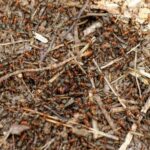How Can Ants Predict Rain?
During rainy seasons, ants are more active than normal. They search for food, water, and shelter. Ants also prepare for hibernation.
The ants’ antennae can detect minute changes in temperature, humidity, and chemical traces in the air. These sensors are sensitive enough to detect a drop in temperature before a rainstorm. Ants have been observed building mounds in advance of rain. Some ant species even build levees around their nests to avoid flooding.
Ants can also sense the barometric pressure. Barometric pressure changes cause the temperature to decrease. Ants respond to this change with a shift in their behavior. Before a rainstorm, ants build anthills to hold back the moisture. Ants may even move to an indoor area.
Some species also build ant hills, which are a good predictor of a hard winter. These hills are usually made of sand or dirt. These materials absorb water, but they also act like a water repellent.
Some ants, such as leaf cutter ants, carry a specific leaf to their nest. These ants have an antenna on their head that can detect changes in temperature. They also have a special gene that lets them sense odours.
Other ant species block the entrance of their nests with rocks, dirt, or twigs. Other species, such as the mangrove ant, have big heads to block their nests.
Some ants, such as Florida carpenter ants, have the most genes for detecting odour and smell. These genes are important for ants’ ability to sense a change in climate before it happens.








